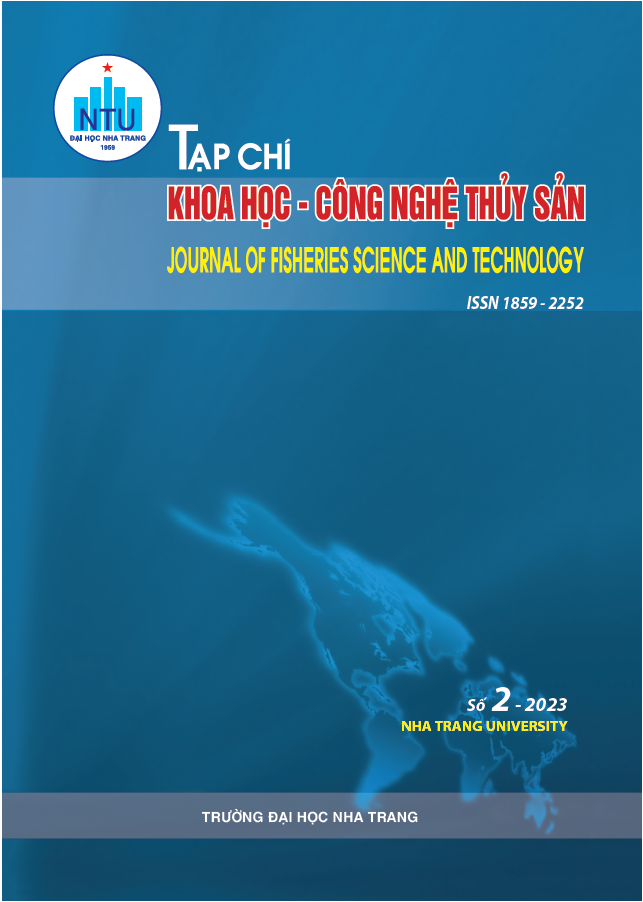##plugins.themes.huaf_theme.article.main##
Abstract
Improved coral cultivation will facilitate the reduction of wild harvesting, reef restoration, preservation of biodiversity, and the use of corals as model experimental organisms. In this study, Euphyllia glabrescens coral used the method of fragmentation and attached them to 3 different substrates including: dead coral, baked brick and cement brick. The coral fragments were placed in circulating tank systems, led light (Illumagic X), temperature ranging 26 – 270 C. From day 1 to day 7 do not feed coral, after 7 days using industrial food (SPS coral food) for daily feeding. Experimental results showed that there was a significant difference in the survival of coral. The highest resulted in dead coral 73.33 ± 1.76%; 55.33 ± 2.44% of cement brick and 54.67 ± 2.73% of baked brick fragments surviving. There was difference in SGR (%) on three substrates after 60 experimental days (p < 0.05). The study has shown that dead coral substrate is suitable for propagation by fragmentation of coral Euphyllia glabrescens in laboratory conditions.

